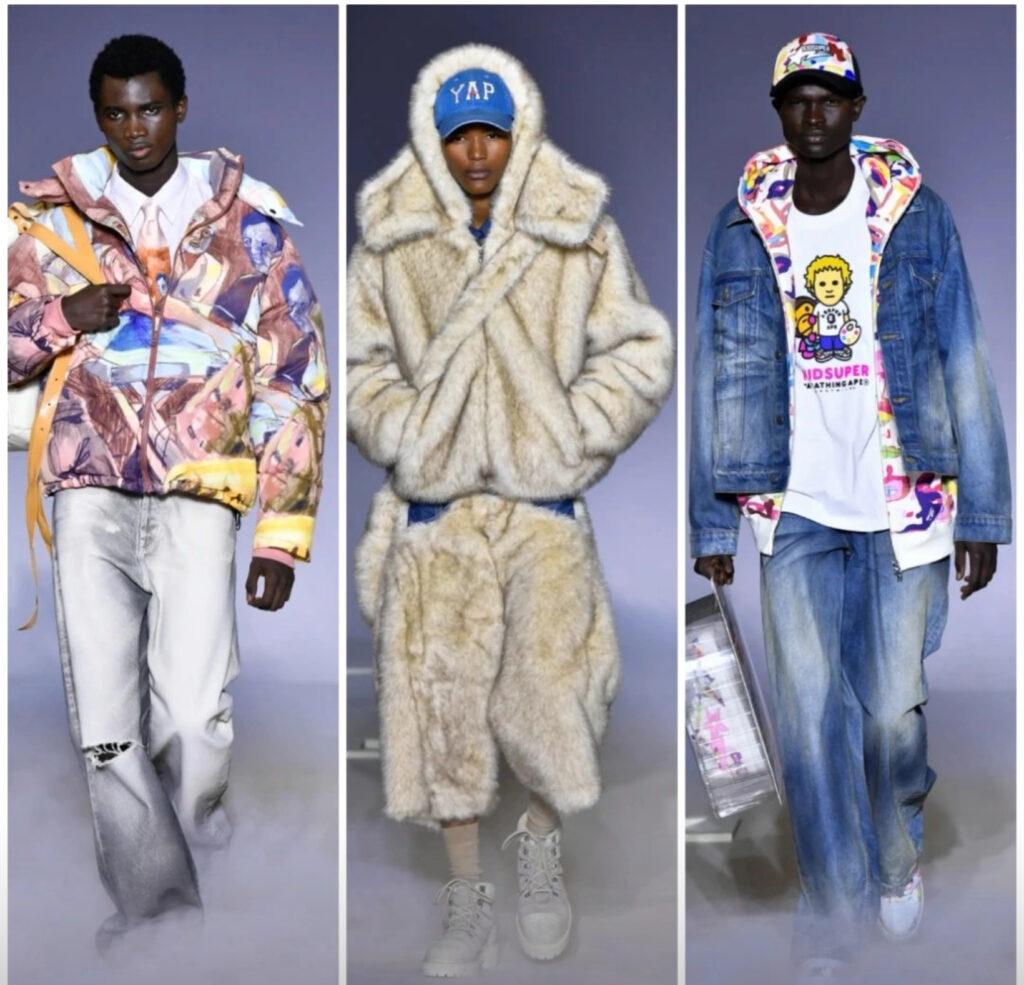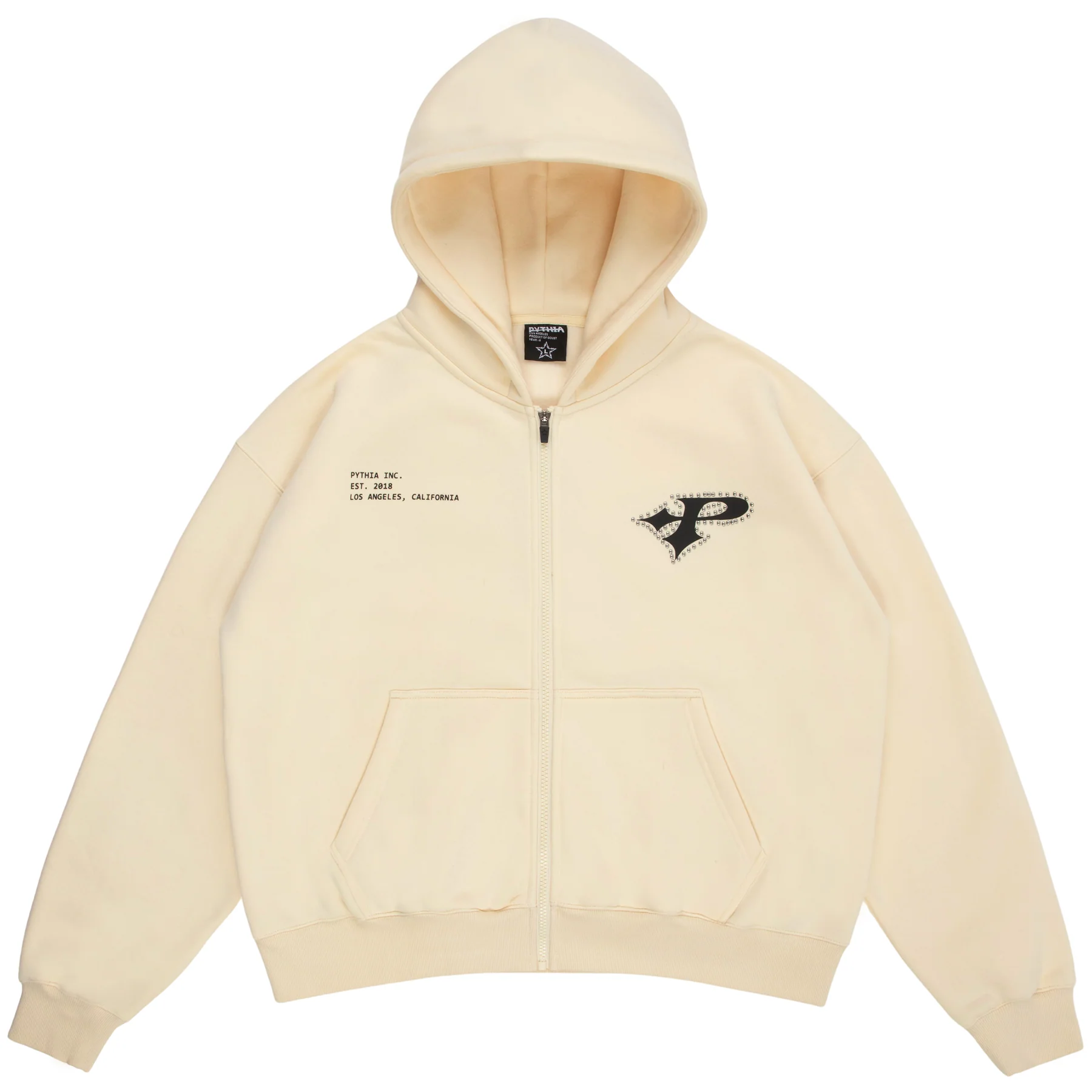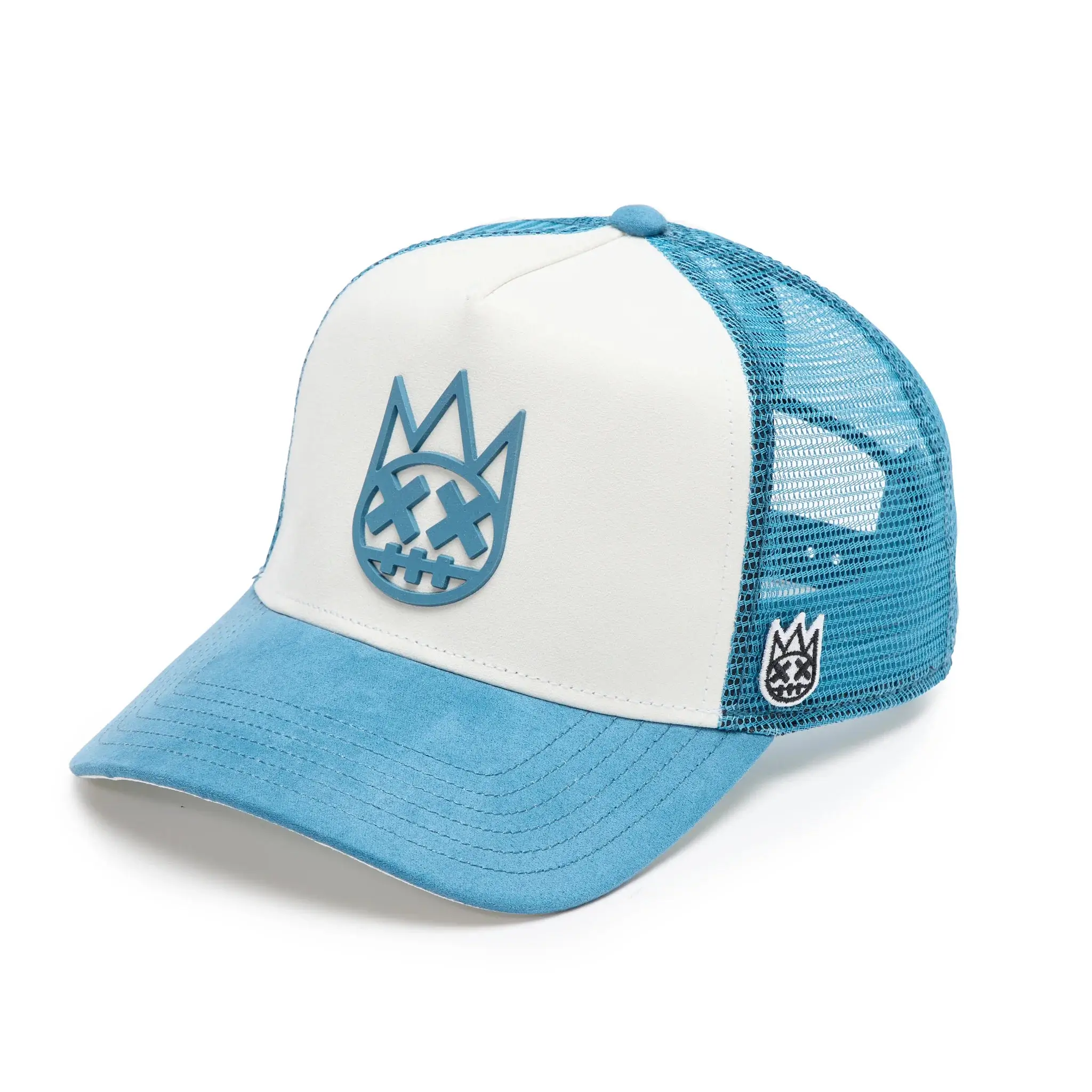
In a season awash with predictability, Colm Dillane’s Fall 2025 KidSuper collection dared to be volatile. Not volatile in the sense of chaos or carelessness, but of kinetic energy—art in motion, literally and metaphorically. Titled From a “Place I Have Never Been”, the show was staged inside a 19th-century hall at the La Villette cultural complex in northeastern Paris. But what truly anchored the collection was a centerpiece tornado installation by fellow Brooklyn-based kinetic artist Daniel Wurtzel, who’s famed for sculpting air, breath, and atmosphere into visual poetry.
As petals, feathers, and strips of paper twisted skyward in an orchestrated vortex, they didn’t just fill the room—they changed its temperature. KidSuper has always been about movement: between disciplines, between expectations, between humor and heartbreak. This time, Dillane set out not just to show clothes, but to simulate the sensation of being unmoored and reassembled in unfamiliar territory.
Tbilisi as Muse: Reimagining Geography
The show’s conceptual departure point was Tbilisi, Georgia—a place Dillane had never visited until recently. That encounter became a catalyst for transformation. “From a Place I Have Never Been” isn’t just a physical destination. It’s also a psychological one. It refers to states of mind, unfamiliar contexts, and creative vulnerability. That vulnerability was evident in both the expanded scale of the collection—50 looks, KidSuper’s largest to date—and in its tonal breadth.
While KidSuper is known for its signature hand-painted suits and art-school irreverence, Fall 2025 was far more layered. The opening looks swept down the runway in shades of dust: earth-toned dusters, faded trench coats, and desert-worn tailoring that evoked post-apocalyptic wanderers. The effect was cinematic—imagine Dune styled by a Brooklyn poet.
But Dillane quickly shifted gears. Structure entered the conversation through cropped blousons, multi-pocketed parkas, and reconstructed suiting. Then came the eruption: a segment of color-rich pieces scrawled with his paintings and drawings, the kind of garments that feel pulled straight from the pages of his notebooks. In the end, he closed on purity—a trio of all-white looks that offered no interpretation, just intention.
The Art of the Hook-Up: Connectors as Narrative Devices
Perhaps the most impressive feat was how seamlessly Dillane threaded together multiple merges without compromising the identity of the house. Fall 2025 didn’t just feature KidSuper—it wove in voices from across continents and subcultures to construct a polyphonic vision of modern masculinity and style.
BAPE by KidSuper introduced cartoonish camouflage rendered in dreamy pastels and surreal patchwork, pushing the Japanese streetwear giant into an emotionally charged register. Instead of riffs on hype, the pieces felt contemplative, like artifacts of a future where nostalgia is reinterpreted with a painter’s hand.
From the other end of the spectrum came the Wildside Yohji Yamamoto capsule—a capsule of disciplined tailoring and spiritual restraint. The silhouettes were somber, draped in charcoal and ink-black, and yet still unmistakably KidSuper in their poetic subversion. It was less a fusion than a duet, with Dillane’s raw impulsivity meeting Yamamoto’s philosophical architecture.
There was Brazilian label Piet, lending its tropical modernist sensibility to sharply cut athleticwear and digitally rendered graphics. Hamcus, the Chinese label known for its futurist outdoor apparel, provided brutalist techwear cut for survivors of imaginary climates. And Kody Phillips, whose designs have been worn by Drake and other contemporary icons, injected a sleek American noir into the collection—reflective puffer gilets, tonal combat pants, and boxy outerwear with cinematic undertones.
Each collaborator functioned like a different lens through which KidSuper’s thesis was refracted. Rather than diluting the identity of the collection, they intensified its multiplicity. Dillane didn’t just connect—he curated.
Workwear Meets Wordplay: The Power of Craft and Commentary
Despite the conceptual fog that swirled around the show—both literally, in Wurtzel’s tornado, and figuratively, in Dillane’s wanderlust—the garments themselves were incredibly tactile. This was a show rooted in craft. Patchwork jackets were pieced from repurposed military fabrics. Knitwear was done by hand, featuring abstract human forms kissing and crying. Trousers were embroidered with phrases like “FEELINGS FIRST” and “NOWHERE IS SOMEWHERE,” a reminder that language remains one of Dillane’s strongest tools.
Many of the garments employed a kind of reverse-engineering. Formalwear was deconstructed with raw seams and exposed linings. Meanwhile, streetwear staples—hoodies, joggers, puffer coats—were elevated with painterly surfaces, complex dye treatments, or meticulous appliqué work.
This wasn’t fashion chasing trends. It was fashion interrogating identity. What does it mean to dress for a place you’ve never been? For a self you’re still becoming? The collection’s strength lay in its refusal to answer those questions neatly. Instead, it offered a series of aesthetic riddles: fragments of art, statements of vulnerability, objects of memory.
Staging as Spectacle: The Tornado as Mirror
Wurtzel’s tornado wasn’t just a visual flourish—it was a metaphor. It illustrated the centrifugal force of KidSuper’s aesthetic: art, chaos, clarity, humor, melancholy, all pulled into a spinning mass. The installation was engineered with surgical precision but designed to feel uncontrolled, an apt parallel for Dillane’s creative ethos.
It also mirrored the emotional arc of the show. Beginning in dust and disorientation, the collection gradually spiraled toward lucidity and form, just as the swirling papers and petals reached their apex and then began to settle, floating to the floor in silence.
When asked either the tornado was a commentary on the modern condition, Wurtzel demurred. “It’s open to interpretation,” he said. Dillane, ever the optimist, seemed more playful. “I just wanted to see if we could make it fly,” he joked.
But perhaps the installation’s most powerful function was symbolic: it reminded us that fashion, like weather, is a phenomenon we experience as much as we analyze. It passes through us, leaves traces on our skin, unsettles and surprises.
Models, Music, and Atmosphere
The casting reflected the collection’s commitment to plurality. Faces of different ages, backgrounds, and body types wore the clothes with lived-in realism. The models weren’t styled as archetypes or moodboards—they felt like characters. Travelers. Strangers. Creators.
The music was an original composition, drifting between ambient echoes and percussive pulses. Spoken word samples—some drawn from Dillane’s own poems—cut through the score like inner monologues. “I miss people I haven’t met yet,” one voice said. “I love memories that haven’t happened.”
The show ended not with a bang but with a hush. As the final white looks exited the runway, the tornado slowed. The room dimmed. The audience, often rowdy at KidSuper shows, sat still—held by a moment that felt unscripted, real.
Impression: KidSuper as Cultural Conduit
Colm Dillane remains a rare force in fashion because he resists fashion’s most tempting delusion: that it must always posture. Instead, he invites us to play, to cry, to wander, to get lost. From a Place I Have Never Been was not a polished narrative, nor a calculated moodboard. It was a vulnerability made visible, wrapped in craft, saturated with color, and lifted by flow.
In a world increasingly obsessed with branding, KidSuper reminds us of something older, stranger, more sacred: the garment as expression. Not just of wealth or taste, but of longing. Of joy. Of questions.
Fall 2025 was not about where we are. It was about where we’re not yet. And if the clothes suggest anything, it’s that wherever we’re going, it’s going to be beautiful, chaotic, and unmistakably KidSuper.
No comments yet.








